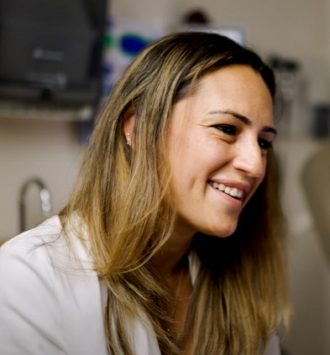
“Relapsing polychondritis is a very hard disease to figure out and that’s where the Relapsing Polychondritis Foundation and the Race for RP really come in to play.”

Learn more about this painful, life-threatening disease, including symptoms and available treatments.
Relapsing Polychondritis (RP) is a rare and degenerative autoimmune disease that affects cartilage in the body. Not much is known about RP. That’s why we’re funding research to better understand and treat it.
Relapsing polychondritis (RP) causes a systemic inflammatory response that can be fatal without proper care and treatment. RP can affect multiple organs in the body; however, it primarily affects the cartilaginous structures in the ears, nose, airways, and joints. It can also affect the eyes, skin, heart valves, and brain.
The signs and symptoms of RP vary from patient to patient. The most common early signs and symptoms include:
List of symptoms is not comprehensive.
The cause of relapsing polychondritis is unknown. Some researchers believe RP is an autoimmune disease that occurs when antibodies attack cartilaginous tissue. Other researchers believe RP is caused by a sensitivity to Type II collagen, a substance found in skin and connective tissues.
Finding the cause of relapsing polychondritis is an important step toward finding treatments and cures. That’s why we invest so heavily in research.

Relapsing polychondritis affects men and women equally. Most patients begin experiencing symptoms between the ages of 40 and 60.
Relapsing polychondritis is extremely difficult to diagnose for a couple of reasons. First, it’s an extremely rare disease that isn’t well-known to the medical community. Second, since the cause is unknown, there is no available blood test to make a rapid diagnosis. As a result, diagnosis is based on clinical symptoms and signs that fit the pattern consistent with RP.
If RP isn’t diagnosed early and treated effectively, there can be irreversible damage and long-term complications for patients.
Treatment for RP is currently focused on managing symptoms and preserving the affected cartilage. RP is a complex condition that requires a team approach to patient care. We recommend the following:
It can feel overwhelming and hopeless to receive a diagnosis of relapsing polychondritis. We’re working to change this by investing in research. We’ve also collected a list of excellent patient resources to help you better understand your diagnosis and find support.




Until recently, there were few options and even fewer resources for patients living with RP. We’re working every day to unlock the mysteries of RP and deliver hope to patients and their families.